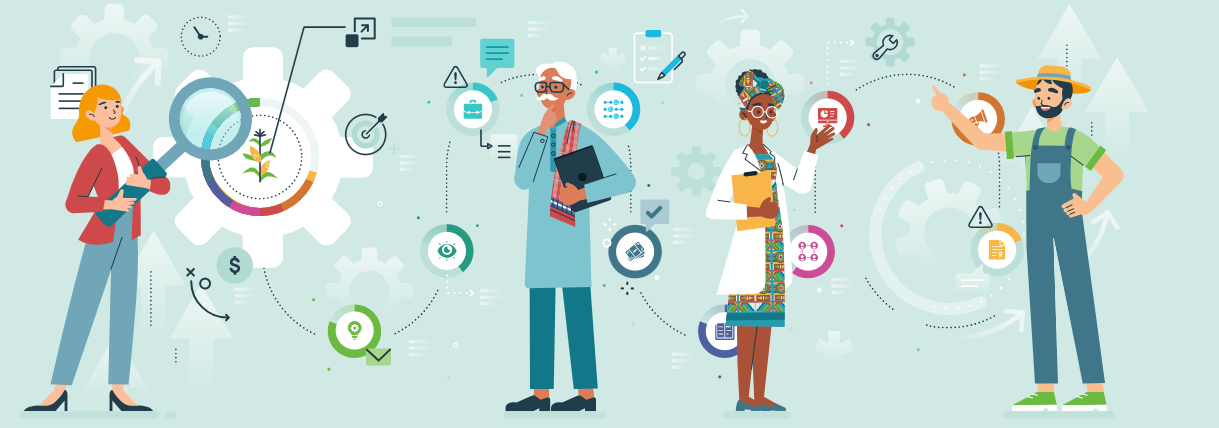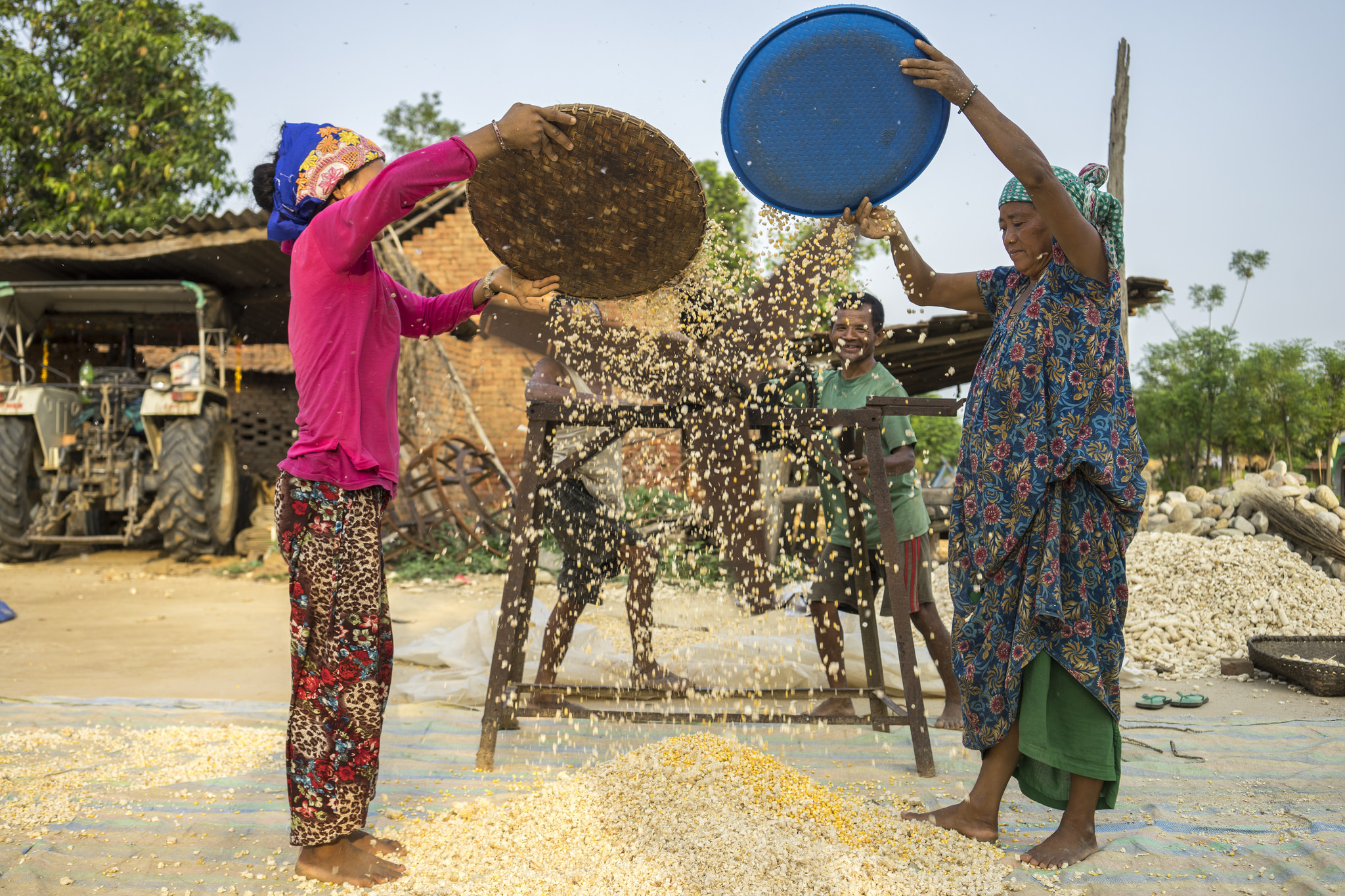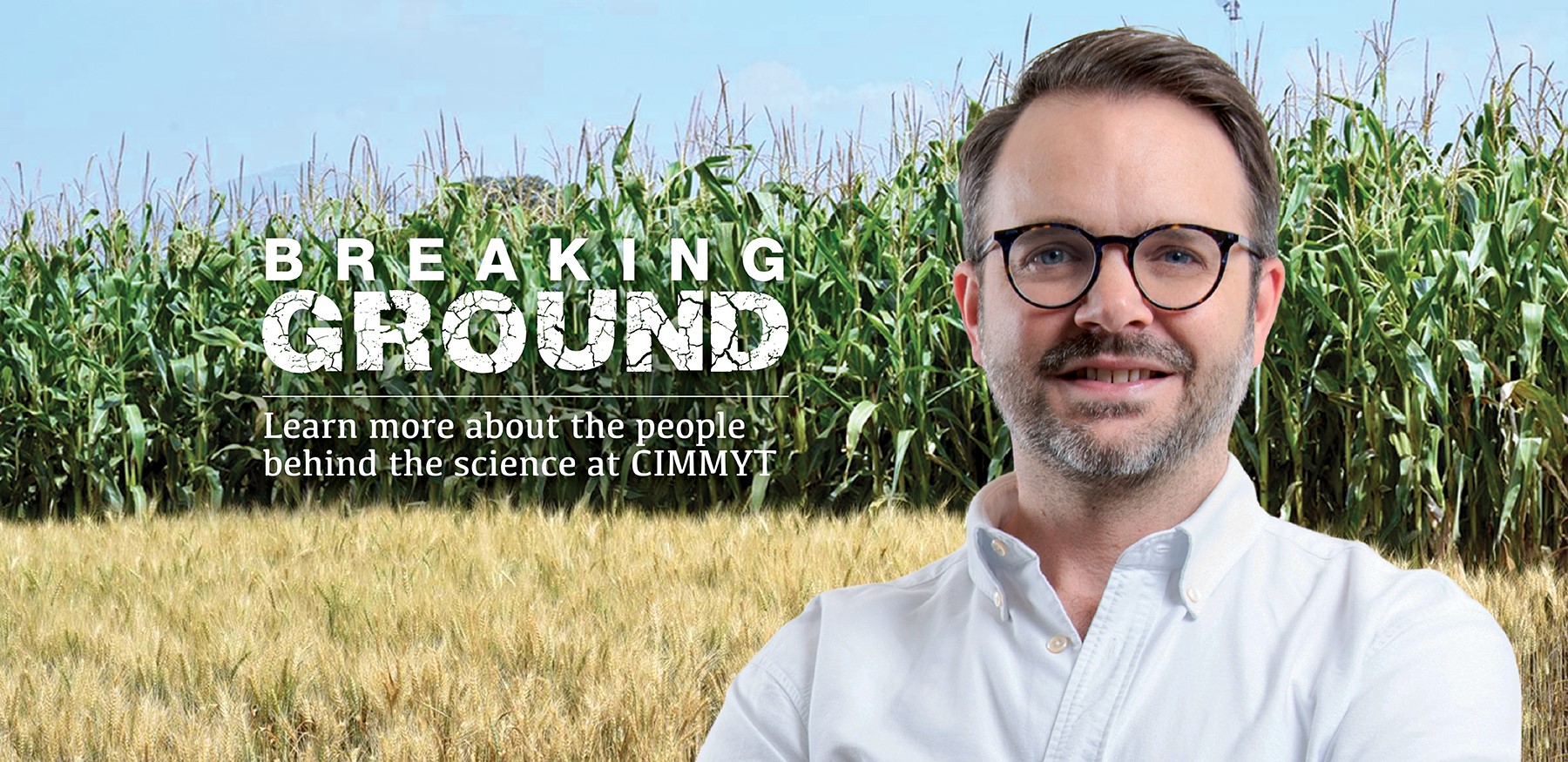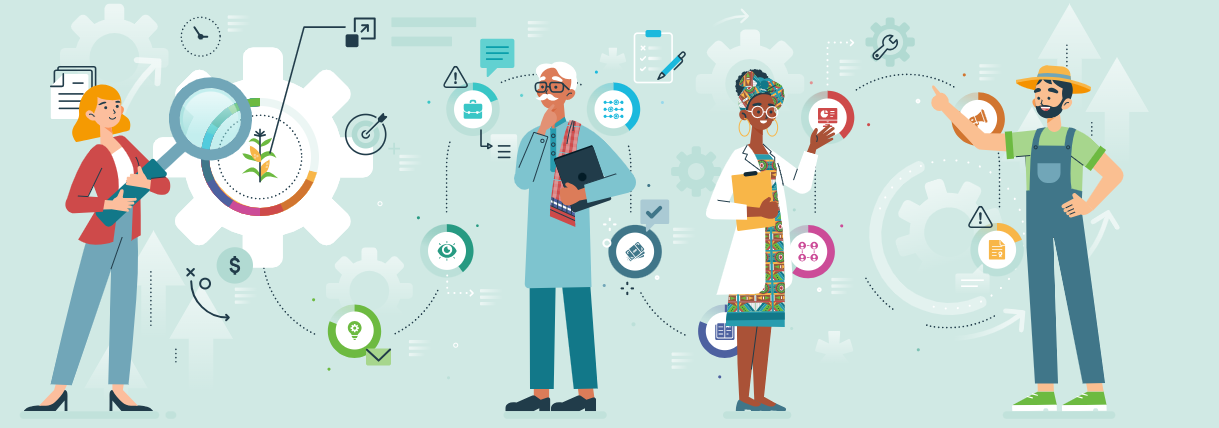
The third edition of Scaling Scan, a user-friendly tool that helps teams reimagine innovation scaling processes, was launched in February 2024.
Developed six years ago by CIMMYT and partners, the tool assesses the status of ten scaling ‘ingredients’ such as business models, finance, evidence, public sector governance, etc. that are considered critical to achieving a scaling ambition. The tool highlights what project teams need to pay attention to on the journey to reach scale. It emphasizes the need to think strategically about potential scaling bottlenecks right at the beginning of the project.
The new edition incorporates feedback across users from voluntary organizations, CGIAR, and private companies, and responds more effectively to climate change and gender inclusivity challenges.
Features of the new edition: inclusive, socially responsible, and accessible
The third edition was developed by subject matter experts from CIMMYT, SNV the Netherlands, the Deutsche Gesellschaft fuer Internationale Zusammenarbeit (GIZ), the Food and Agriculture Organization of the United Nations (FAO), and the Alliance of Bioversity International and Center for Tropical Agriculture (CIAT).
There is more focus on scaling innovation as a means to contribute to food systems transformation with an upgrade on systems check. Users can go through the x-curve to reflect on what dominant technology or practice can be scaled down to make space for CIMMYT’s ‘innovation of interest’.
The upgraded tool takes into consideration social responsibility, acknowledging intersectional trade-offs for the beneficiaries when they scale innovations. It helps reflect upon who will win or lose from the scaling of these innovations, and how the scaling ambition can also include capacity-building and equality.
The parameters of environmental responsibility, which previously focused on how to use resources, now also includes an analysis of potential trade-offs and risks of scaling innovations.
Researchers and program managers still use linear approaches to scaling which are not suitable for complex development problems such as hunger and poverty. The latest edition improves the equity of scaling. The new edition is also more accessible and user-friendly; the interface is upgraded and is available in English, Spanish, and French
The new version includes updated tools to help users further analyze and plan their scaling strategies by strengthening their lowest ingredient.
There is also a workbook and a digital tool that can be used for both online and on-site settings. Check out the material and a forum to exchange opinions and questions on the application of the tool on the Scaling Scan webpage.
What’s next?
Coming up is a paper to help users learn more about previous experiences of organizations, academics, and practitioners using the Scaling Scan by collating the learnings of the past six years. It includes the analysis of the tendencies of the Scaling Scan results that have been used in different countries around the world, which can be useful for future enabling conditions assessments of innovations.
There is also an online course coming up which will train and certify users as a Scaling Scan trainer. Try the Scaling Scan tool today!
Acknowledgements
- Intellectual collaborators from FAO, GIZ, and The Alliance Bioversity International and CIAT for their support in developing the third edition of the Scaling Scan.
- CGIAR Low-Emission Agriculture Initiative (Mitigate +) for helping develop the workbook.
- AgriLAC Initiative for the publication of the six years of experience in Scaling Scan.
- DX Digital Initiative for support in developing the Scaling Scan course.

 Innovations
Innovations 
